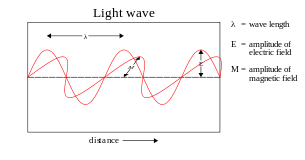Waves, Sound and Light (part 1)
Waves, Sound and Light
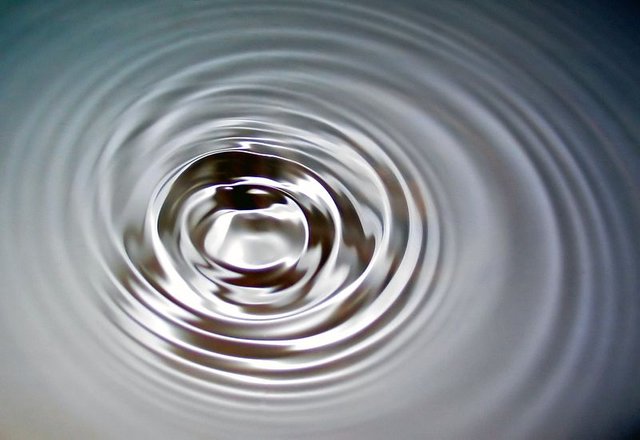
SURFACE WAVES IN WATER SHOWING WATER RIPPLES
Transverse pulses
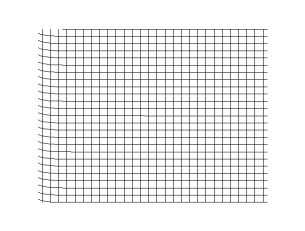
TRANSVERSE WAVE IN LINEAR POLARIZATION. THIS WAVE WOULD OCCUR ON A WATER SURFACE
A pulse by means of a spring
- Let a slinky spring rest on a smooth surface such as a table
- Attach the one end of the spring to a fixed Point
- Flick the other and quickly to one side and back again. Observe what happens.
Observation
The success of coils of the spring move sideways, one after another and the disturbance is propagated to the other end of the spring.
This disturbance that moves through the spring is called the pulse. In this way, energy is transmitted by the particles from one end to the other of a medium.
A pulse is a single disturbance that is propagated from one and to another in a medium.
A medium is the substance through which the disturbance travels.
Propagate is the process by which a disturbance is transmitted through a medium
Description of a transverse pulse
In a transverse Pulse the particles of the medium move at right angles to the direction of propagation of the pulse. You could also define a transverse pulse in this way: in a transverse Pulse the direction of disturbance is perpendicular to the direction of propagation of the pulse.Representation of a pulse
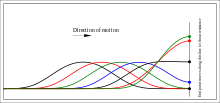
A PULSE REACHING THE END OF THE MEDIUM
There are many different positions and lengths of pulses. We have the equilibrium position which is the rest position of the medium when there is no disturbance, we also have the displacement of particles of a medium which means how far a particle of a medium has moved from its equilibrium position. The amplitude is the maximum displacement of the particles of a medium from the equilibrium position. The pulse length indicates the width of the pulse as well as the maximum distance from where the pulse starts to where the pulse ends in the equilibrium position.
Superposition of pulses
Superposition

TWO WAVES TRAVELLING IN OPPOSITE DIRECTIONS ACROSS THE SAME MEDIUM
If two pulses travel towards each other through the same medium, for example a rope and a spring will end up meeting at a specific point in time and will eventually overlap exactly. They will thereafter combine to form a single Pulse with a greater amplitude or they could also form a single Pulse with a smaller amplitude.
Once the pulses have overlapped and Superposition has taken place, they separate once again to the original pulses and continue in the original direction.
If two pulses move through the same space at the same time, the overlap and the amplitude of the combined pulse is equal to the sum of the amplitude of the individual pulses. This is known as the superposition of waves.
Interference
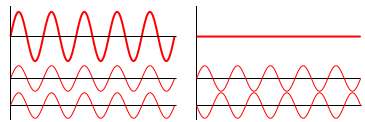
THE INTERFERENCE OF TWO WAVES
When two or more pulses move through the same space at the same time and overlap, superposition occurs and the phenomenon of interference can be observed.
We can distinguish between two different kinds of interference namely:
- Constructive interference which takes place when two pulses amplifiy each other, which ends up resulting in a single pulse with a greater amplitude. Which is an area where Maximum Disturbance is produced.
- Destructive interference which takes place when the two pulses weaken or neutralize each other which results in a single Pulse with a smaller amplitude or no pulse and has an area of minimum or no disturbance.
Transverse Waves
A wave consists of regular succession of disturbances or pulses that originated at one point in a medium and are propagated through the medium. During a wave motion, energy is transmitted from one point to another.
Description of a transverse wave
A transverse wave is a succession of transverse pulses
Waves by means of a spring
Transverse waves are generated in a spring when the spring is repeatedly move sideways or up and down.
The particles of the medium of the spring vibrate up and down to the equilibrium positions while the pulse is propagated at right angles through the spring.
Water waves and light waves
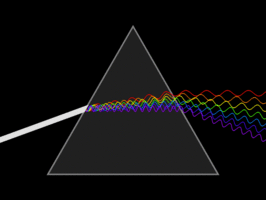
A TRIANGULAR PRISM DISPERSING A BEAM OF WHITE LIGHT
THE END
References
1.https://en.wikipedia.org/wiki/Wave
2.https://en.wikipedia.org/wiki/Transverse_wave
3.https://en.wikipedia.org/wiki/Transverse_wave
4.https://en.wikipedia.org/wiki/Transverse_wave
5.https://en.wikipedia.org/wiki/Superposition_principle
